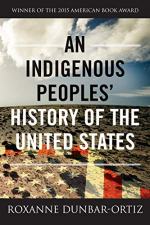
|
| Name: _________________________ | Period: ___________________ |
This test consists of 5 multiple choice questions, 5 short answer questions, and 10 short essay questions.
Multiple Choice Questions
1. What Christian denomination did most Calvinists belong to?
(a) Catholicism.
(b) Methodism.
(c) Lutherenism.
(d) Presbyterianism.
2. How many Ulster-Scots emigrated to North America during 1717-1775?
(a) 100,000.
(b) 150,000.
(c) 200,000.
(d) 250,000.
3. How did Europeans view the newly "discovered" Americas?
(a) As a virgin land or wilderness.
(b) As a confining spare or prison.
(c) As a complex civilization.
(d) As a barren wasteland.
4. What term was used for the "systemic destruction of all the indigenous agricultural resources" (61)?
(a) Scorched ground.
(b) Wipeout.
(c) Feedfight.
(d) Dry cinders.
5. What term refers to the the use of economic and political pressures to control foreign countries?
(a) Expansionism.
(b) Capitalism.
(c) Development.
(d) Neocolonialism.
Short Answer Questions
1. What did the Doctrine of Discovery state?
2. According to Dunbar-Ortiz, what drove colonialization projects in the 1600s?
3. Which of the following tribes was a member of the Six Nations of the Iroquois confederacy?
4. Native populations developed an extensive system of roadways. What did most of these early roadways eventually become?
5. How does corn differ from most grains?
Short Essay Questions
1. Some Native communities quickly accept tributary status under the new colonial regime. Why does Dunbar-Ortiz believe these communities chose to comply?
2. Native communities who tried to ally themselves with settlers often broke off alliance after a while. Why did these ruptures occur?
3. What beliefs were espoused by John Calvin?
4. How does Dunbar-Ortiz describe documents like the U.S. Constitution, the Mayflower Compact, the Declaration of Independence, and the Gettysburg Address?
5. According to Dunbar-Ortiz, what was the economic impact of the Crusades?
6. According to Dunbar-Ortiz, the English popularized a theory that only they were made in God's image. What origins did they ascribe to other races?
7. According to Dunbar-Ortiz, what was the impact of the Northwest Ordinance?
8. What was the Latin term for the papal law describing the "cleanliness of blood," or racial purity?
9. What were three branches of government practiced within the Seminole and Muskogee nations?
10. How did the bounty on scalp-hunting threaten Native communities?
|
This section contains 595 words (approx. 2 pages at 300 words per page) |

|




